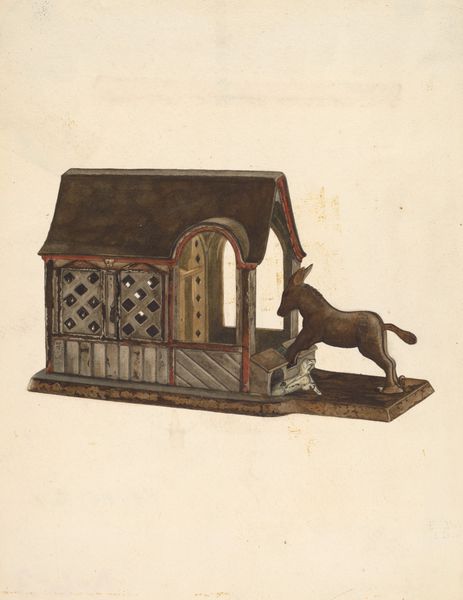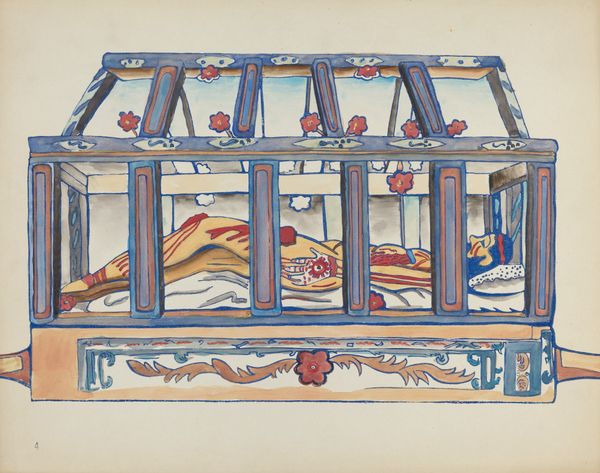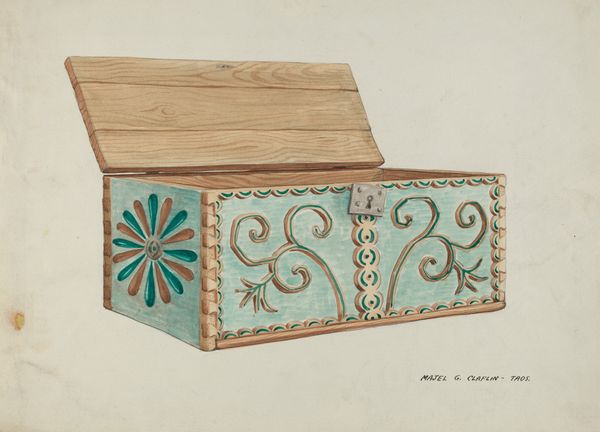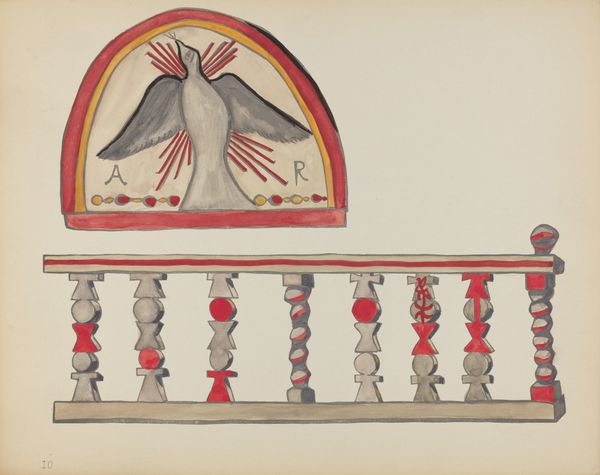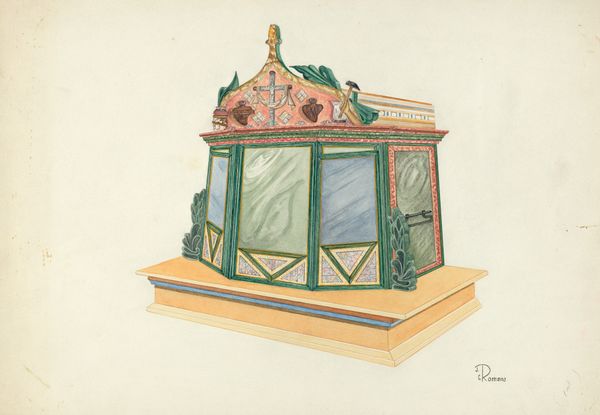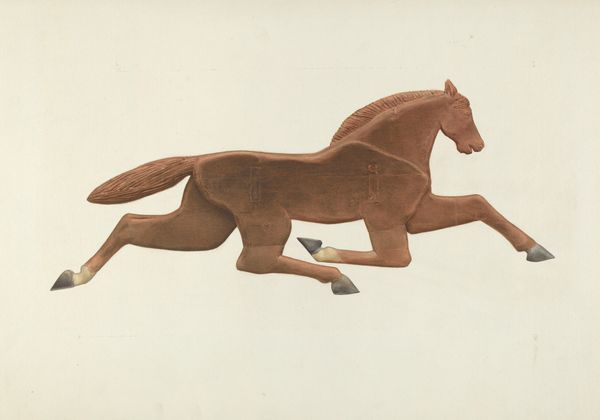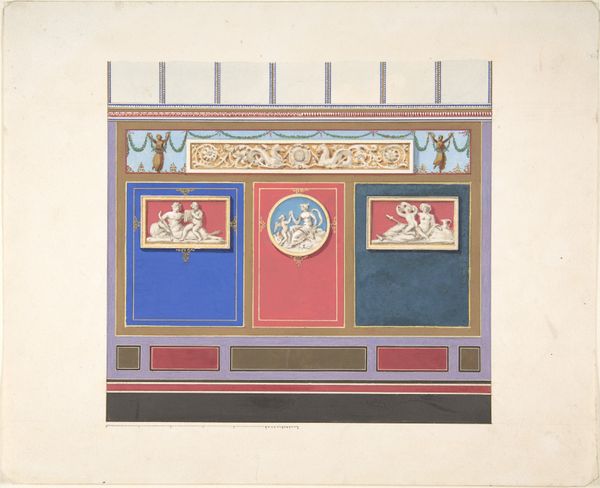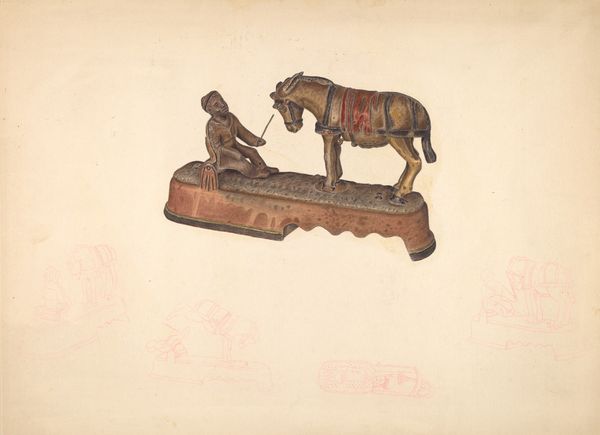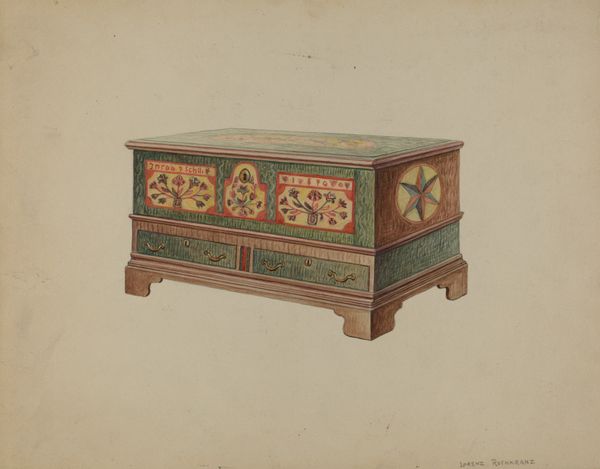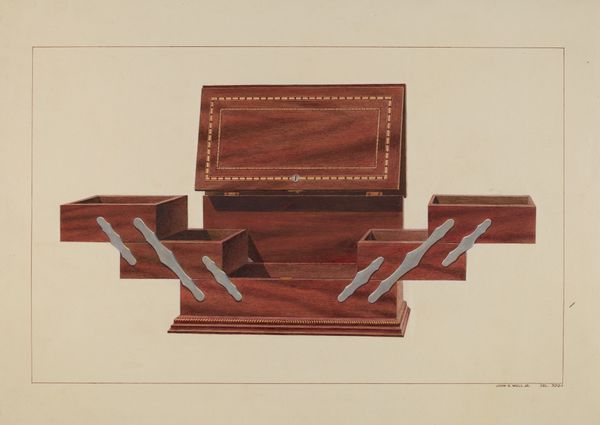
drawing, coloured-pencil, watercolor
#
drawing
#
coloured-pencil
#
watercolor
#
coloured pencil
#
watercolour illustration
Dimensions: overall: 23 x 30.6 cm (9 1/16 x 12 1/16 in.) Original IAD Object: overall: 10" long; mule: 3 1/2" high; bank: 5 1/2" high; 5" long, 4" wide.
Copyright: National Gallery of Art: CC0 1.0
Curator: So, this image is by D.J. Grant, circa 1942. It's rendered using watercolor and coloured pencil and is titled, "Toy Bank: Mule and Manger." What catches your eye here? Editor: Initially, the whole piece radiates this quiet, nostalgic charm. It feels almost dreamlike, muted. And there's this little burst of curiosity. Curator: Tell me about that curiosity, as the image clearly borrows from established imagery. Can you unravel its deeper meanings? Editor: The scene depicts a toy bank; this humble scene with its dark wood and dark diamond shapes almost suggests a toy stage, with the donkey eagerly venturing inside. Its narrative feels incomplete somehow; like we're just glimpsing one frozen frame in the little dramas of childhood. What kind of narratives do toy banks normally carry, anyway? Curator: They often signify fiscal responsibility and the accumulation of savings for future use. However, this specific image blends capitalist accumulation with the humbler narratives of the Christian Nativity: in symbolic terms, it offers wealth to Christ and asks Him for something in return. I think there's also some satire going on here, in that this Christ is being offered material wealth. Editor: It’s that merging of religious themes with very concrete financial elements that feels… poignant. Like this strange, beautiful dissonance. Is that deliberate, do you think, a purposeful subversion of symbols? Curator: Potentially, but I find the overall effect rather melancholy. Childhood and religion offer familiar comforts, and the bank itself becomes the place of nostalgic ritual, holding both monetary offerings and imagined memories of childhood. It represents, in essence, lost childhood revisited as an adult through memory. Editor: Looking again, that slightly off-kilter perspective definitely amplifies the slightly unsettling aura, the bittersweet sentiment. It’s like a familiar nursery rhyme whispered just a little too softly, or perhaps the sound of a favorite wind-up toy, running down and finally running out. Curator: Indeed, its use of everyday items suggests Grant had an intense desire to connect everyday lives with wider cultural beliefs about morality, hope, and even national values. Editor: A really fascinating meditation on material objects.
Comments
No comments
Be the first to comment and join the conversation on the ultimate creative platform.
